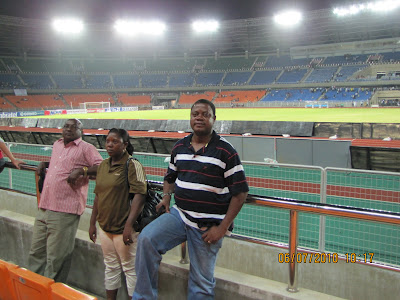INTRODUCTION
In our homes, we create waste. Some of the waste is what is termed "gray water"--from our sinks, bathtubs, showers and washing machines (if we use biodegradable soaps) and this waste can be recycled to be used to water the grass and plants. Much of the waste is biological, sanitary waste, coming from our toilets and garbage disposals. In the absence of a functioning government run and maintained sewer system, this waste is traditionally vacated into a large tank dug into the ground somewhere within 10 or so feet from the house. This is called a septic tank.
The Workings of the Tank
A septic tank is a large holding tank where human waste can decompose into component parts so the recyclable portions can be returned to nature and the environmentally dangerous parts can be pumped away and carted off. The septic system is comprised of three parts: the tank, the distribution box and the leach field. The biological waste runs from the house into the tank, there it separates naturally into water, gases and undigested material. The gases will eventually vent into the atmosphere as part of the septic tank's plumbing system. The undigested material separates into "sludge" which drops to the bottom of the tank and "scum" which floats to the top. Both the sludge and the scum are surrounded by baffled walls in the tank to prevent them from leaching into the surrounding environment. Between the sludge and the scum is the relatively clear water which is filtered, through a series of perforated pipes, to the distribution box and ultimately to the leach field, which is an area of ground around the tank that can absorb the liquid. When the tank fills to capacity, the sludge is pumped out by a truck with a huge vacuum cleaning device, and hauled away to be properly disposed of.
Safety
The leach field should be at least 100 feet away from your or your neighbor's well. As a general rule, the field should not be up-slope from a well and ought to be at least 100 feet from the high water mark of a pond or river. No part of the system should be under a porch or a driveway, and heavy vehicles should not be driven over any part of the system. There is a capped pipe sticking up from the tank somewhere about 10 feet from the house. By removing the cap and checking the level of the liquid within, you can ascertain whether you need to pump. It is not a good idea to wait too long.












































